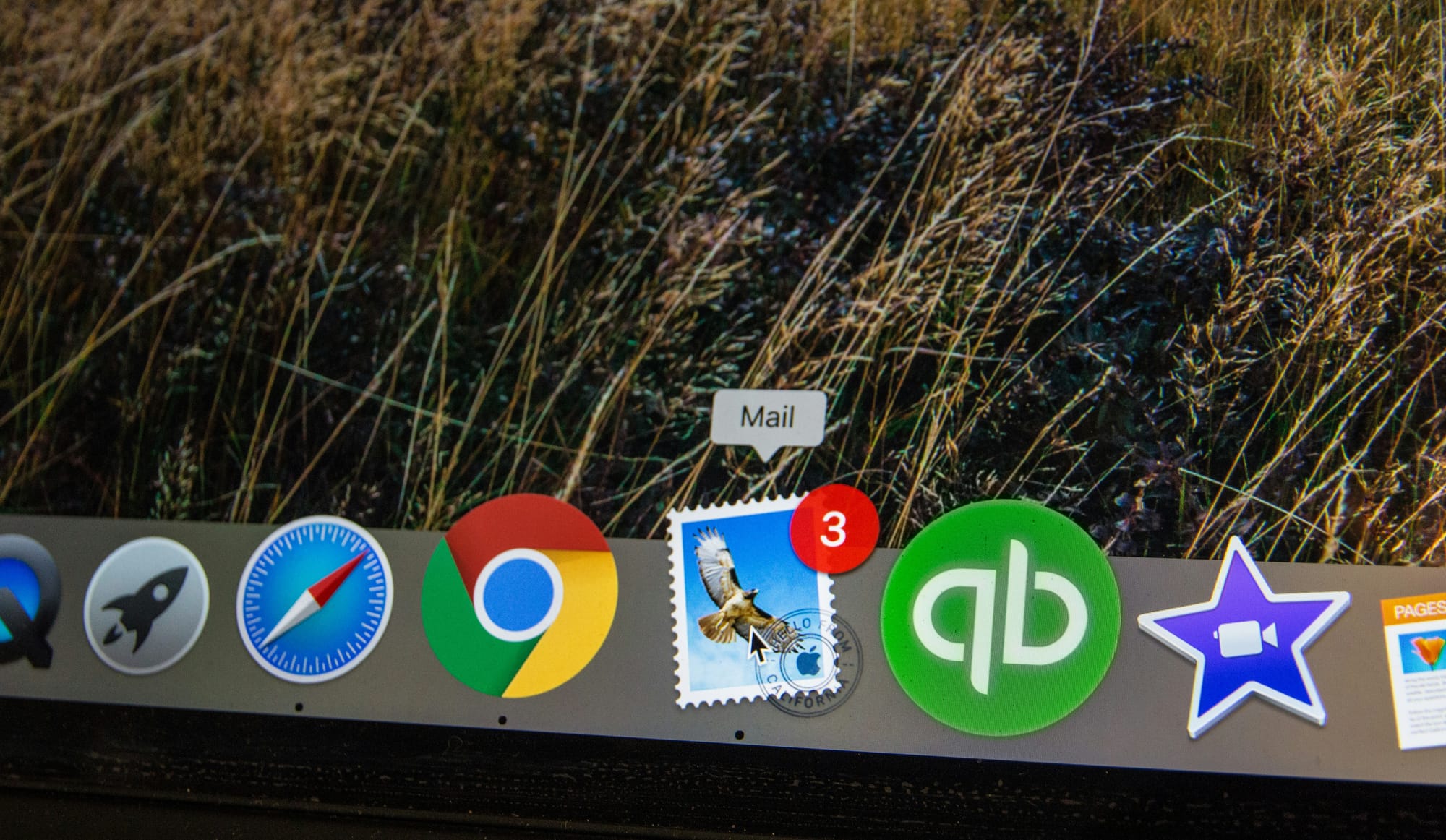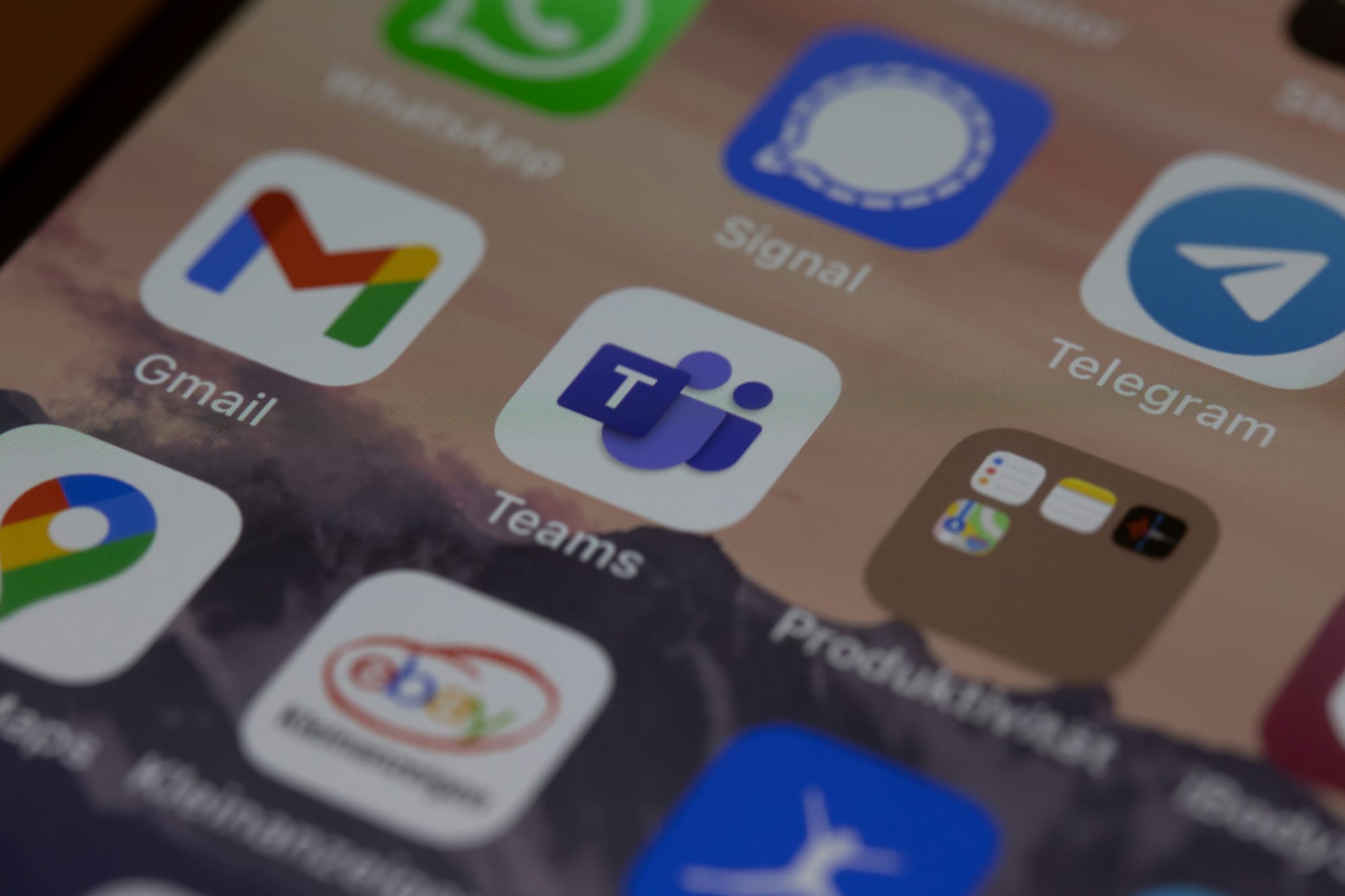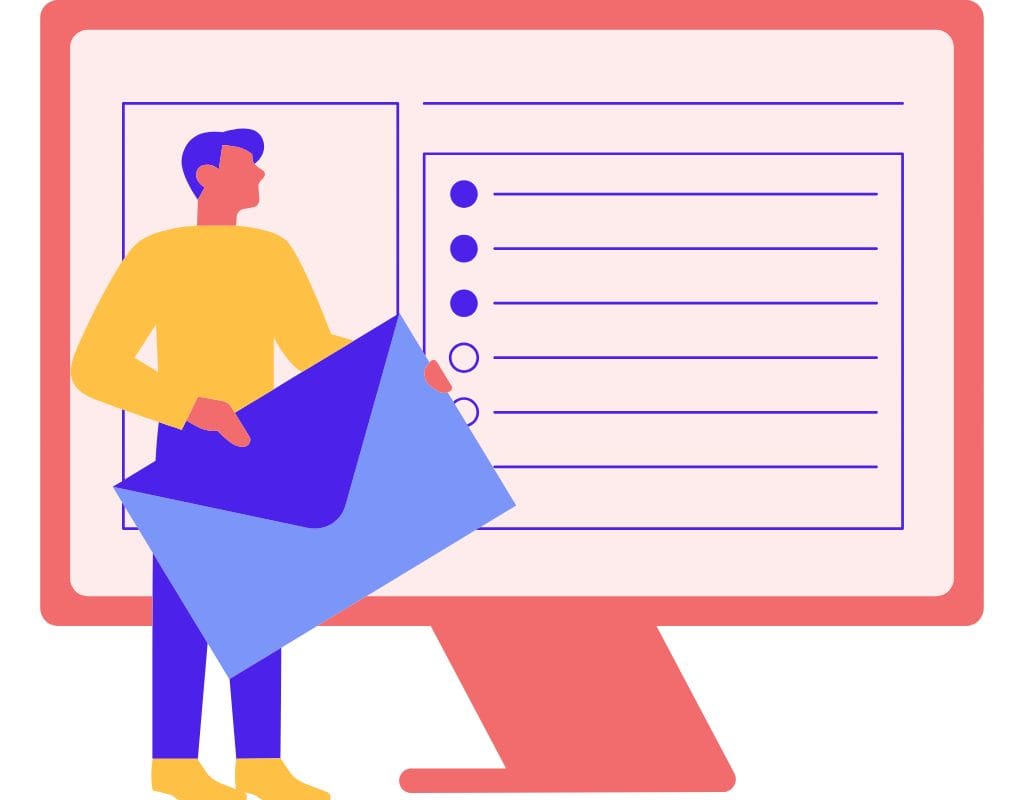Communication is very important in our personal and work lives these days, especially since we live in a digital world. As technology keeps getting better, so does the way we talk to each other. One popular way to talk to each other is through email, which has been around for decades. But since there are now a lot of email service companies, people often wonder if Email and Gmail are the same thing. To begin, this blog post will talk about the main differences and links between email in general and Gmail, which is a Google email service. If you know these differences, you can choose the tool that best meets your communication needs.
What Is Email?
Email, which stands for "electronic mail," is a way to send and receive messages over the Internet. People and businesses can quickly send and receive messages, files, and other types of digital communication. Email is a big part of communication these days, and people use it for everything from personal, work, or school.
Email is simple: someone writes a message using an email client, enters the recipient's email address, and sends it. The recipient's email server receives the message and stores it until the recipient retrieves it through their email client. With this method, people in different time zones can talk to each other and check their emails whenever it suits them.
Email also has many tools and functions that can help you communicate better. There are many things you can do, such as making contact lists, linking files, and sorting emails into groups or labels. Email also supports threaded conversations, which make it easy for users to follow and reply to conversations that are already going on.
To send messages, email uses the Simple Mail Transfer Protocol (SMTP), and to get messages, it uses either the Post Office Protocol (POP) or the Internet Message Access Protocol (IMAP). Emails sent between computers and clients are safe and reliable when these steps are taken.
People and companies all over the world can connect and share information through email, which is a very flexible way to communicate. That being said, it's important to remember that email is just an idea. There are different email service companies, with Gmail being one of the most popular and widely used.

What is Gmail?
The email service Gmail, which was created by Google, gives people a complete and feature-rich way to manage their emails. When it first came out in 2004, Gmail quickly became famous because it was easy to use, had strong security, and had new features. A lot of people use Gmail, which is one of the most well-known email services. It's now what many people and businesses think of when they think of email.
How Gmail Works
Gmail works in a way that is similar to how email works in general. People can write, send, receive, and save electronic notes. Google Mail, on the other hand, stands out because of its unique system and advanced features.
All of Gmail's emails and related data are kept on remote servers, not on the user's device. This is called a "cloud-based" system. This has many benefits, such as showing emails on any internet-connected device and automatically syncing data across all devices.
Unique Things About Gmail
Many tools in Gmail make using email better and make communication easier. Some features that stand out are:
- Spam Filtering: Gmail uses strong algorithms to automatically get rid of spam and other questionable emails, so your inbox stays clear.
- Search Features: Gmail has powerful search features that make it easy to find specific emails or information in your inbox. You can search by sender, date, keywords, or even files.
- Labels and Organization: Gmail users can use labels, which are like virtual folders, to order their emails. This feature makes it easy to sort emails into categories and organize them in a way that makes handling easier.
- Tabbed Inbox: Gmail's tabbed inbox automatically sorts new emails into primary, social, promotional, and other customizable tabs. This helps people organize and keep track of their emails better.
- Google Drive Integration: Gmail and Google Drive work together perfectly, so users can easily attach and share files saved in Google Drive.
- Smart Reply and Compose: Gmail uses machine learning to offer short email responses and AI-generated ideas while creating new messages.
How to Use Gmail
You need to make a Google account before you can use Gmail. After signing up, you can check your email in a browser or on your phone or tablet with Gmail. Gmail has a clean style with sections for your inbox, sent items, drafts, and more. The interface is easy to understand and use.
User can write new emails, reply to or forward existing ones, and quickly organize their inbox by archiving, deleting, or marking emails as unread. Gmail users can also customize their inboxes and set up filters and rules to manage their emails.
Gmail has a web version and also works with third-party email apps like Microsoft Outlook and Apple Mail. This means that users can access their Gmail account through these programs.
Overall, Gmail is a strong and complete email service that has many features and functions that can be used by people, professionals, and businesses. Gmail's user-friendly, strong search tools and compatibility with other Google services attract millions of users worldwide.

What Makes Email and Gmail Different
There are several important differences between email as an idea and Gmail as an email service. There are three types of differences: conceptual differences, functional differences, and interface and usage differences.
Different Concepts
- Ownership and Control: "Email" refers to multiple email service providers, each with its rules and infrastructure. Google, on the other hand, owns and runs Gmail. This means that Google controls the service and how it works.
- Branding and Customization: Gmail lets you customize your inbox's style, themes, and layouts, making it more personal than other email services.
- Email Address: People who use a general email service can pick an email address from a lot of different domains. Gmail users get "@gmail.com," which is easy to identify.
Differences in Function
- Storage Capacity: Email service companies offer different amounts of space for users to store their emails. Gmail offers 15 GB of free storage and lets users buy extra.
- File Size: Some email services may have limits on how big of files you can send or receive. Attachments in Gmail can be up to 25 MB in size, but you can share bigger files by integrating Google Drive.
- Integration with Other Google Services: One of the best things about Gmail is how well it works with other Google services like Google Drive, Google Calendar, and Google Docs. This connection makes it simple to share files, plan events, and work together.
- Advanced Search Features: Most email services only offer basic search features, but Gmail's search features are strong and advanced. Users can narrow down their search results by using operators, filters, and specific terms.
Differences in Interface and Usability
- User Interface Design: The look and feel of the email client screen can be different depending on the email service. People love how clean and simple Gmail's layout is, with a focus on making it easy to use.
- Labels vs. Folders: Other email services may use folders to order and sort emails, but Gmail uses labels. Labels are more flexible because they let users give emails more than one label and quickly find and sort messages based on these labels.
- Conversation View: Gmail comes with the idea of a conversation view, which groups emails with the same topic into a single thread. By grouping related messages, this function makes managing emails easier and clears up the inbox.
- Offline Access: Some email services may only let you access your emails when you're not connected to the internet. But Gmail has a mode that lets you access, read, and write emails even when you're not online.
Understanding these differences is important for users who want to choose the best email service for their needs. There are many options for email in general, but Gmail is a popular choice for many people and companies because it has special features, works with other Google services, and is easy to use.

What Email and Gmail Have in Common?
Despite the differences between email in general and Gmail as a particular email service, they also have several things in common. Both email and Gmail are useful for making contact easier, and these similarities show how they do that.
They Help Communication
- Sending and Receiving Messages: Email and Gmail both let users share and receive messages electronically. Users can write new emails, reply to or forward old ones, and join talks that are already going on.
- Instant Delivery: Messages are delivered almost instantly through both email and Gmail, making contact quick and easy.
- Access to People Around the World: Both email and Gmail allow people to talk to each other regardless of where they are located.
- Multiple Recipients: You can send notes to more than one person at the same time using both email and Gmail. This lets you have group discussions and work together.
Common Features
- Attachments: Email and Gmail both let you link files to messages, so you can share documents, photos, videos, and other types of files.
- Address Book/Contacts: Both email and Gmail have tools for managing contacts and keeping an address book. This makes it easy to save and find the email names of people you talk to often.
- Safety Features: Email and Gmail both have safety features that keep spam, phishing attempts, and unauthorized entry at bay. This includes things like encryption, spam blockers, and virus scans.
- Notifications: Email and Gmail both have features that let users know when new messages arrive, so important messages get read quickly.
Compatible
- Access from Multiple Platforms: You can access both email and Gmail from computers, smartphones, and apps, among other things. This lets people stay in touch and check their emails while they're out and about.
- Compatible with Email Clients: Email and Gmail can both be used with famous email clients like Microsoft Outlook, Apple Mail, and Mozilla Thunderbird. This gives users the freedom to choose the email management software they like best.
- Interface Compatibility with Other Email Providers: Gmail works well with other email providers, so users can send, receive, and handle emails with people who use different email services.
Even though email and Gmail are not the same, it is important to remember that they are both very useful for communicating. There is still a core goal of making communication easier, no matter if you choose a general email service or the special features and benefits that Gmail offers.

Picking Between Email and Gmail for Your Email Needs
When choosing whether to use a general email service or Gmail in particular, you should think about how you communicate and several other factors. You will be able to choose the platform that best fits your needs and tastes if you make an informed choice. In order to help you make a choice, here are some steps:
Figuring Out What You Need
- Goals: Figure out the main reason you use email. Is it for personal or business communications, or do you use it for both? Think about how often and how much you send and receive emails.
- Features: Write down the exact functions and features that are important to you. Do you need advanced search features, tools that work with each other, or a lot of freedom to make changes?
- Storage Needs: Think about how much space you need for emails and files. Check to see if the storage space that a regular email service gives you is enough or if you need the huge storage space that Gmail offers.
- Collaboration: If you often work on papers or projects with other people, you might want to check out Gmail's collaboration features and how it can connect to other tools through its integration with Google Drive.
Pros and Cons Side by Side
- Pros of General Email Services: You can choose from a lot of different hosting companies with general email services. They might give you more choices for customizing your email address, adding your own logo, and using different email clients.
- Pros of Gmail: It's easy to use, has strong security measures, a lot of storage space, and works well with other Google services. Its conversation view, powerful search tools, and labeling system make it easier to get things done and stay organized.
- Cons of General Email Services: Some general email services may have limits on how much space they can hold, how big attachments can be, and how many advanced features they can offer. They might also not have the easy connection and teamwork features that Gmail has.
- Cons of Gmail: Because Gmail is owned by Google, your emails and data are subject to Google's privacy rules. Some Gmail users may be worried about how their information is collected and how it is used for focused ads.
Making a Well-Informed Decision
- Think About Trade-Offs: Look at the pros and cons listed above and decide which ones are most important to you. Think about what you're ready to give up in terms of privacy, features, storage space, and ease of use.
- Trial Period: If you're not sure, you might want to try both choices. Sign up for a general email service and make an account on Gmail to see how the features work, how easy it is to use, and how well they fit your contact needs.
- Ask for Advice: People who have used different email services before, like friends, coworkers, or people in online groups, can give you advice. You can use their ideas and reviews to help you make informed decisions.
Always keep in mind that there is no one right way to choose between email and Gmail. It comes down to your tastes, needs, and goals in the end. To choose the best email tool for your communication needs, you should carefully think about your requirements, weigh the pros and cons, and then make a choice.

